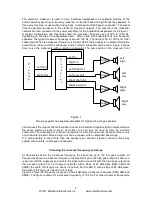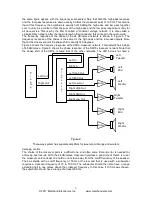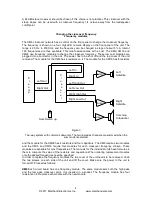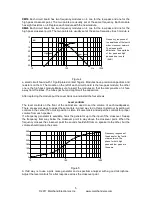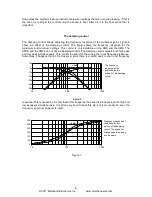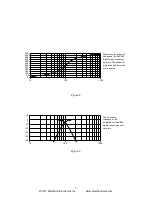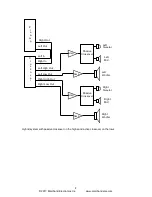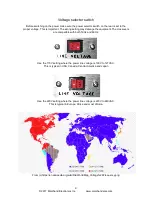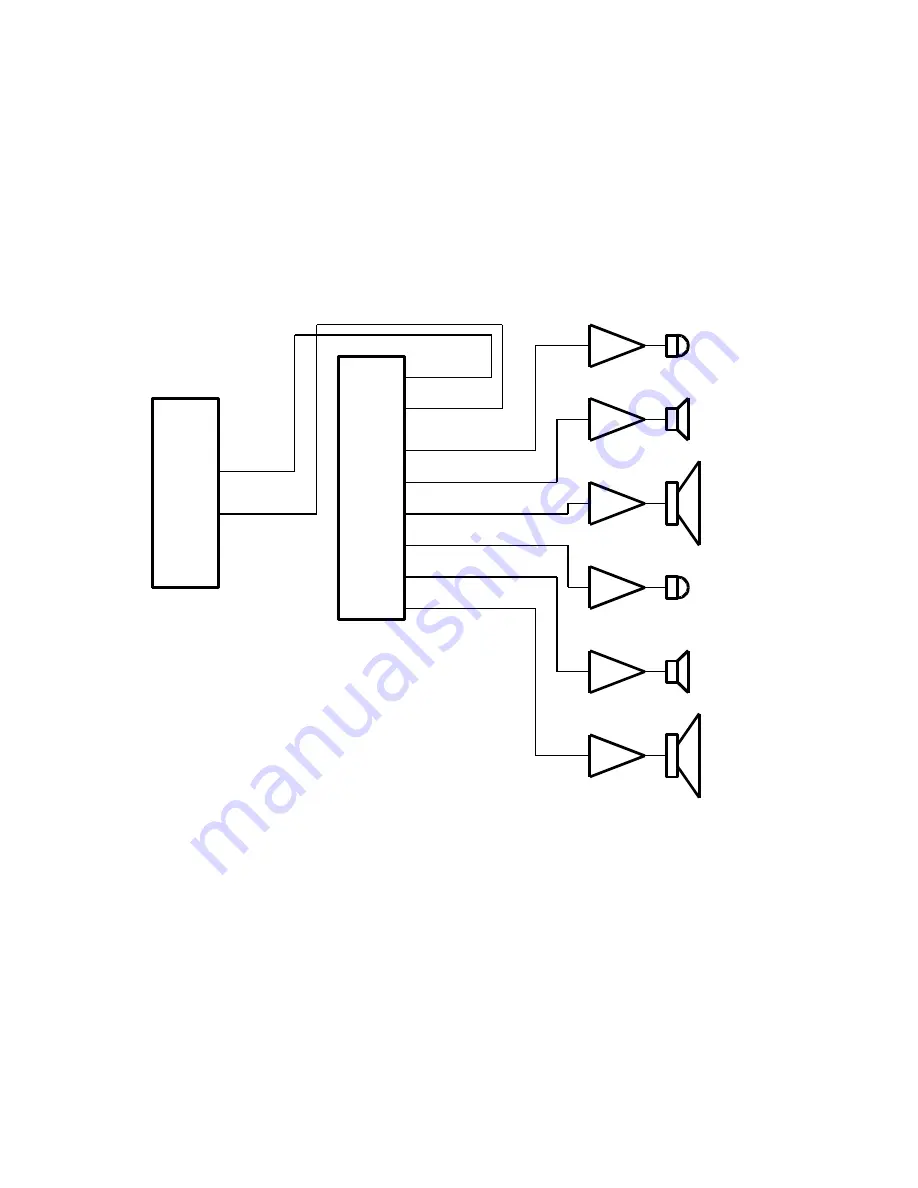
the same figure applies, with the frequency scale scaled. Note that both the high pass response
and the low pass response are down exactly 6 dB at the crossover point of 100 Hz. This means
that at this frequency the amplitude is exactly half. Adding the high pass and low pass together
sum to unity. As a matter of fact the sum of the high pass and the low pass response is unity for
all frequencies. This is why the filter is called a “constant voltage network. It is also called a
Linkwitz-Riley network, after the two writers who first introduced this concept in the audio world.
The frequency response of the phase of the 24 dB/octave network is shown in Figure 5. The
frequency response of the phase is the same for the high pass and the low pass outputs. Note
that at the crossover point the phase shift is exactly 180 degrees.
Figure 9 shows the frequency response of the XM16 crossover network. This network has a slope
of 48 dB/octave. Figure 8 shows the phase response of the XM16 crossover network. Note that
the phase shift of the XM16 is twice that of the other networks. The XM16 does not have a
damping control.
The choice of the crossover point is a difficult one, and often some trial and error is needed for
achieving best results. With the 24 dB/octave crossover networks a good rule of thumb is to set
the crossover point at least one half to one octave away from the cutoff frequency of the speaker.
Thus a satellite with a cutoff frequency of 50 Hz at the low and that is used with a subwoofer
requires a crossover frequency of 75 to 100 Hz. The subwoofer should then also have a range
extending half to one octave above the crossover frequency. In this case, if 100 Hz was chosen,
the subwoofer should have a range of at least 200 Hz.
© 2017 Marchand Electronics Inc. www.marchandelec.com.
3
Amp
Amp
Left
Mid
Left
Woofer
C
r
o
s
s
o
v
e
r
Left Mid Out
Right Mid Out
Right High Out
Right
Tweeter
Right
Woofer
Left Low Out
P
r
e
a
m
p
Right In
Left In
Left Out
Right Out
Amp
Amp
Amp
Right
Mid
Left
Tweeter
Right Low Out
Left High Out
Amp
Figure 2
Three-way system has separate amplifiers for tweeters, midrange and woofers


